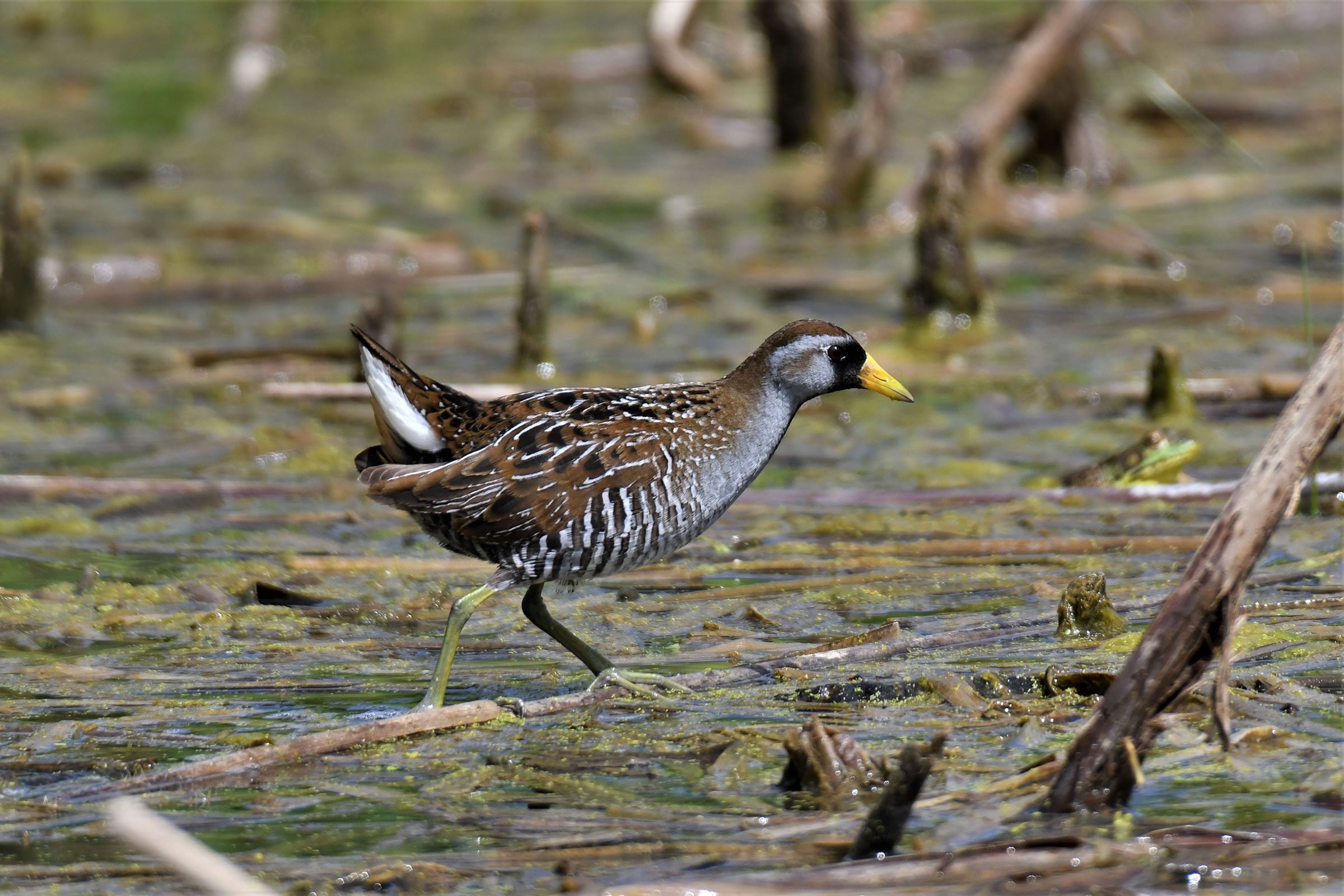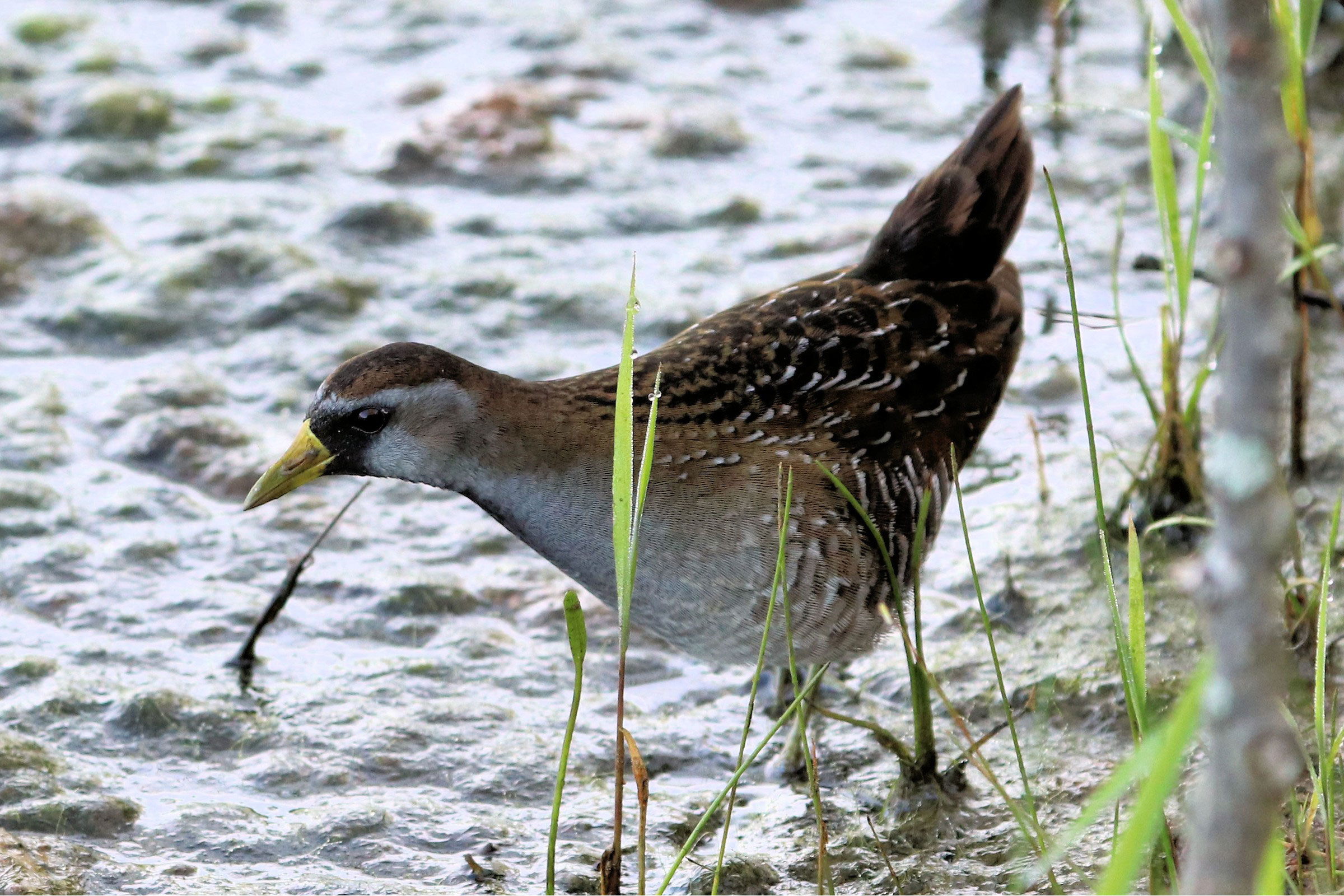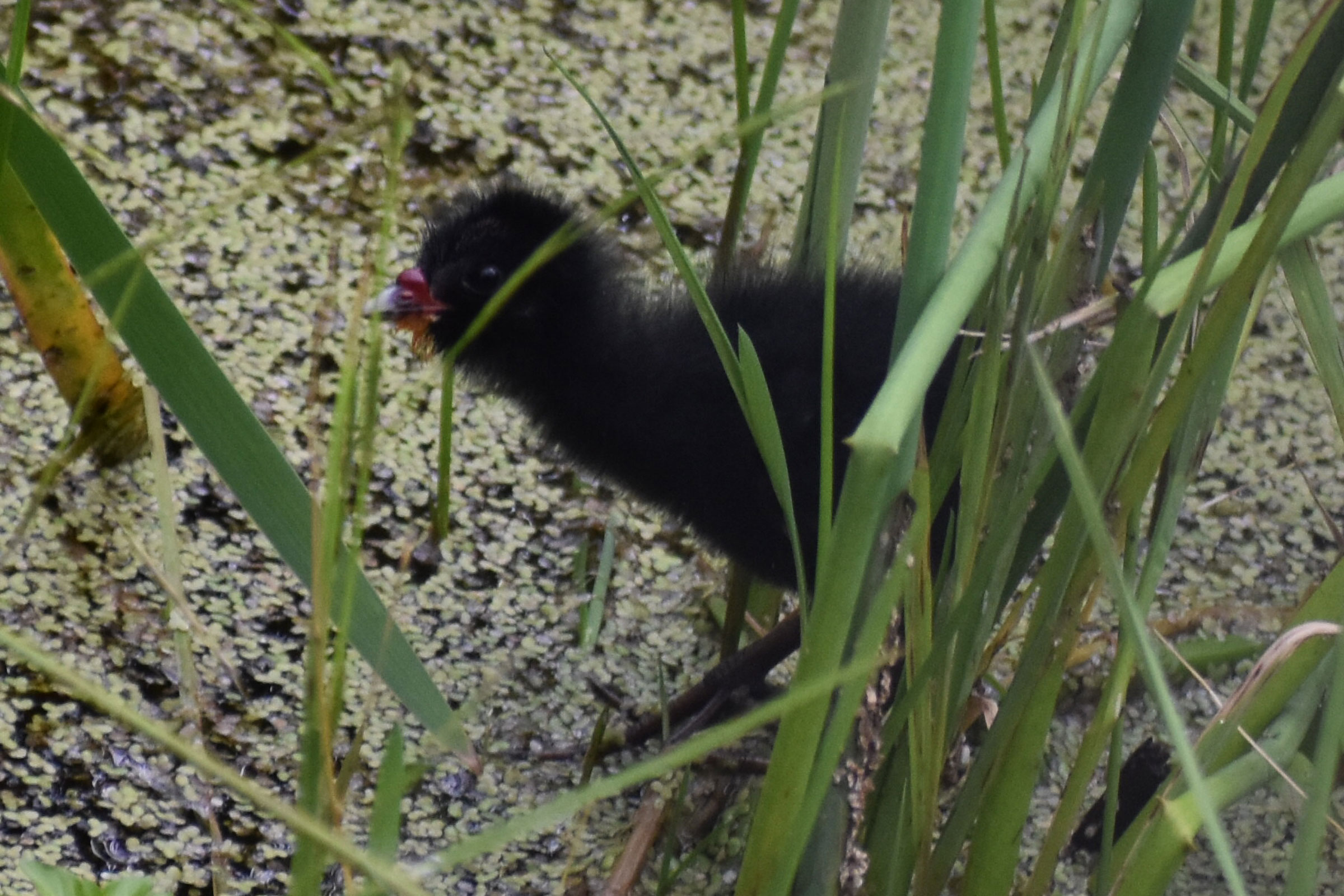Introduction
Soras are highly secretive marsh birds that nest on the margins of shallow freshwater wetlands in dense patches of cattails and sedges. In eastern North America, Virginia rests at the very southern edge of the Sora’s accepted breeding range, with most maps showing only far northern Virginia to be part of the typical range (Melvin and Gibbs 2020). Although occasional breeders in the state, Soras are abundant in many freshwater marshes during their fall migration in September and October, which generally coincides with the ripening of wild rice, a favored food, and other aquatic plants.
Breeding Distribution
During the Second Breeding Bird Atlas, there were too few breeding observations to develop distribution models for the Sora. Please see the Breeding Evidence section for more information on its breeding distribution.
Breeding Evidence
Soras were confirmed breeders at two locations in Rockingham County and at one location in Tazewell County. In Augusta County, a Sora was seen and heard vocalizing in appropriate habitat, but breeding could not be confirmed. Thus, Soras were only confirmed breeders in the Mountains and Valley region of the state during the Second Atlas. There were three instances of possible breeding (Fauquier and Prince William Counties and Virginia Beach), but none of these observations could be elevated to probable or confirmed (Figure 1). During the First Atlas, there was one confirmed breeder and one possible breeder (Figure 2).
All breeding was confirmed through observations of recently fledged young (June 10 – July 18) in freshwater wetlands (Figure 3).
For more general information on the breeding habits of this species, please refer to All About Birds.
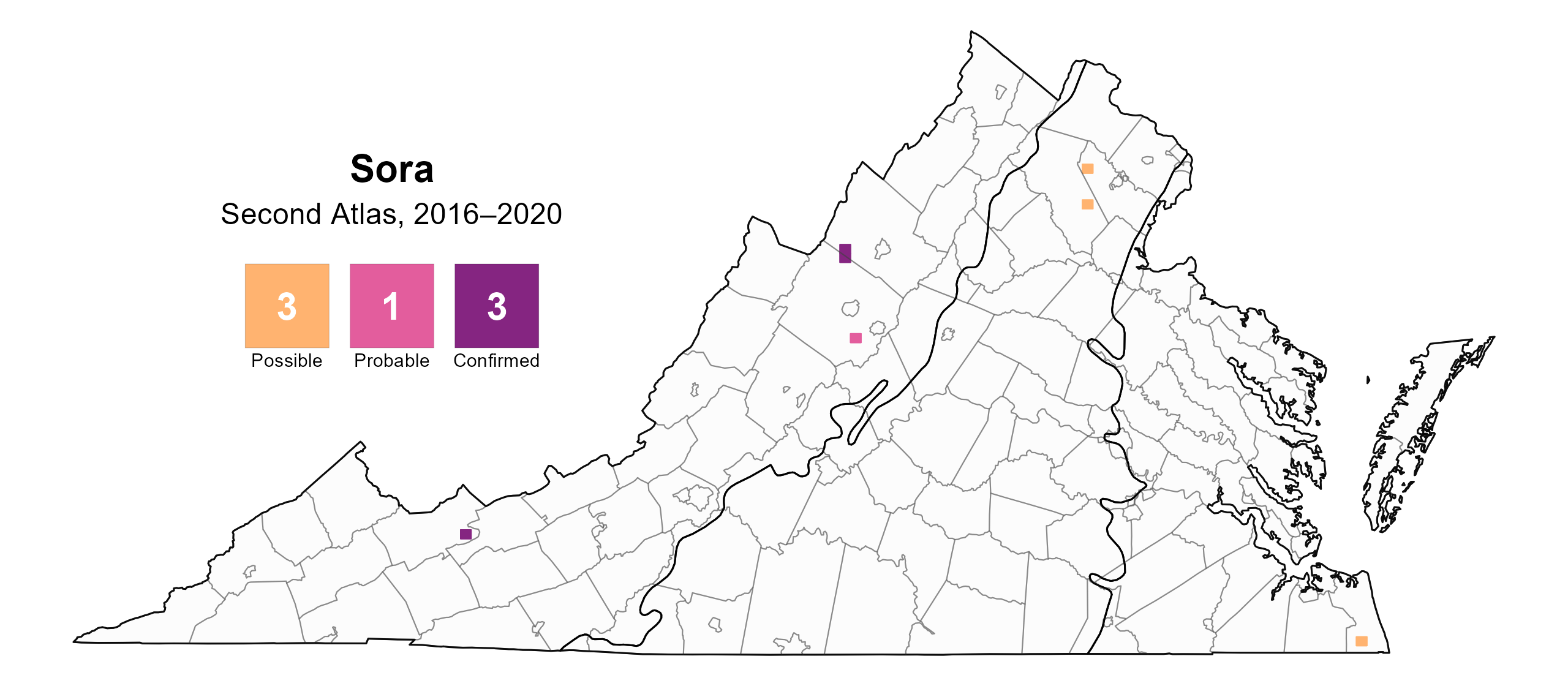
Figure 1: Sora breeding observations from the Second Atlas (2016–2020). The colored boxes illustrate Atlas blocks (9 mi2 The colored boxes illustrate Atlas blocks (approximately 10 mi2 [26 km2] survey units) where the species was detected. The colors show the highest breeding category recorded in a block. The numbers within the colors in the legend correspond to the number of blocks with that breeding evidence category.
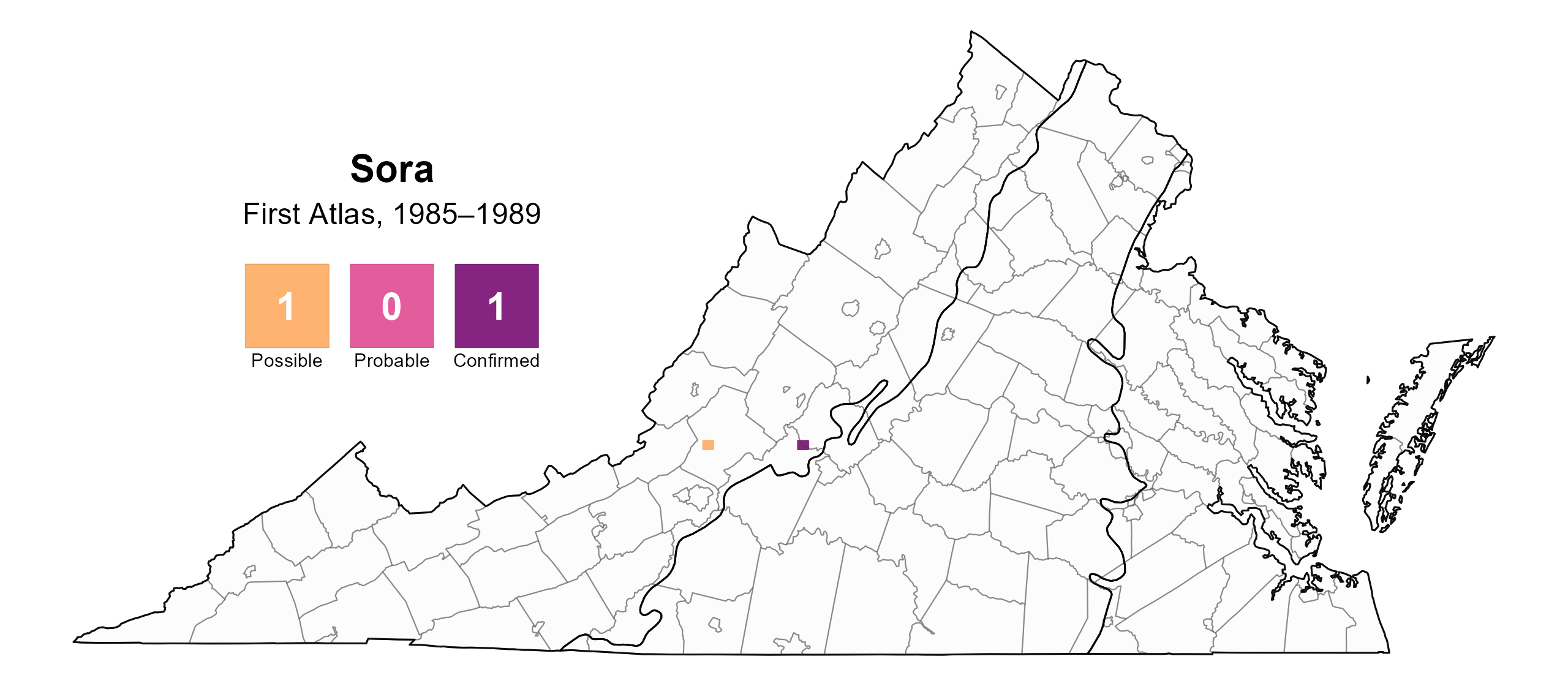
Figure 2: Sora breeding observations from the First Atlas (1985–1989). The colored boxes illustrate Atlas blocks (approximately 10 mi2 [26 km2] survey units) where the species was detected. The colors show the highest breeding category recorded in a block. The numbers within the colors in the legend correspond to the number of blocks with that breeding evidence category.
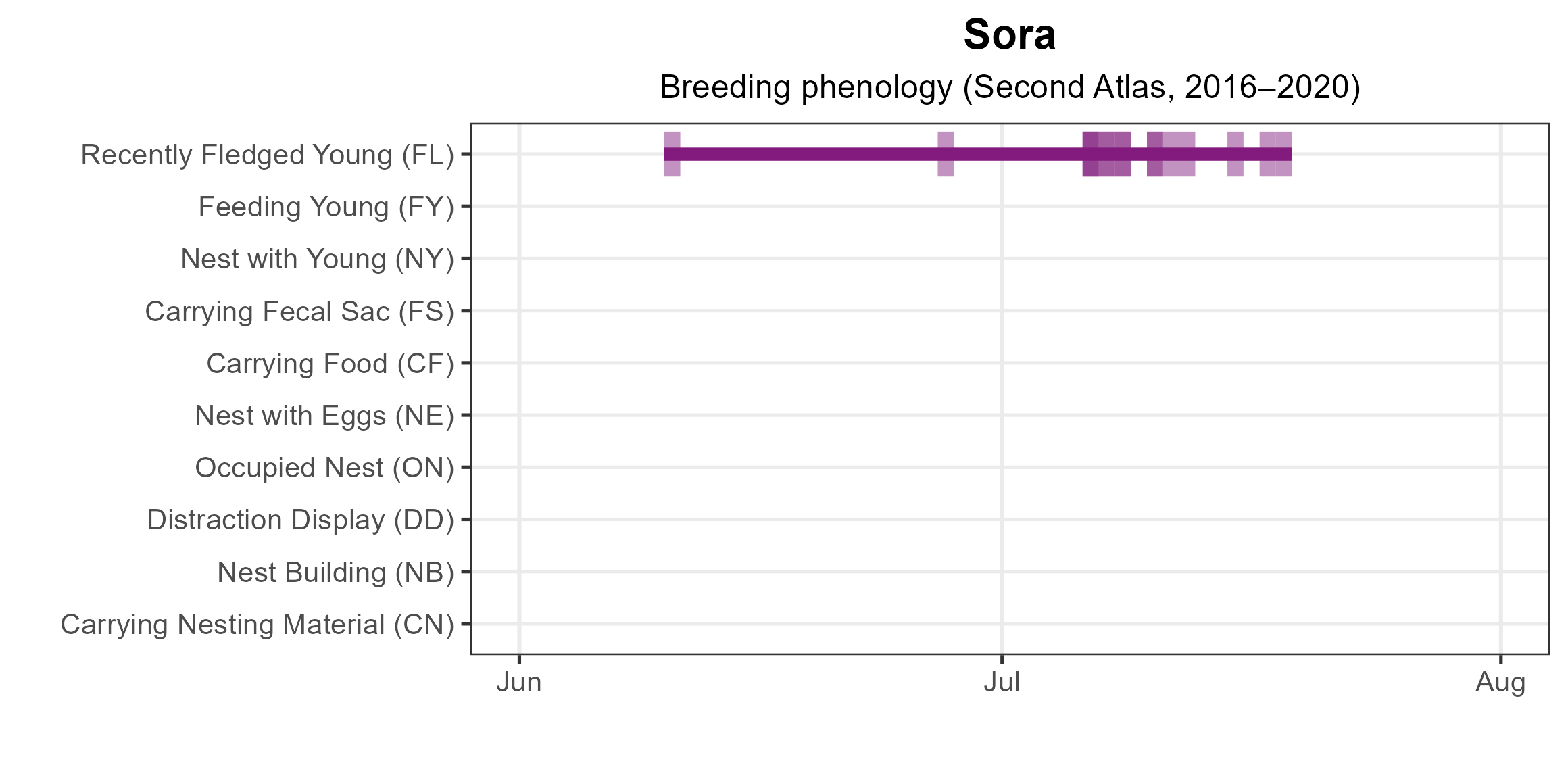
Figure 3: Sora phenology: confirmed breeding codes. This graph shows a timeline of confirmed breeding behaviors. Tick marks represent individual observations of the behavior.
Population Status
Because Virginia is on the edge of breeding range for the Sora, the species is not detected well on surveys and is often missed in areas with many calling frogs (Bryan Watts, personal communication 2023). Thus, no population or abundance estimates are available.
Conservation
Despite relying on wetlands for completing its annual life cycle, Soras are not a species of conservation concern across their range (Melvin and Gibbs 2020). In Virginia, there are no specific conservation projects underway for this species.
Interactive Map
The interactive map contains up to six Atlas layers (probability of occurrence for the First and Second Atlases, change in probability of occurrence between Atlases, breeding evidence for the First and Second Atlases, and abundance for the Second Atlas) that can be viewed one at a time. To view an Atlas map layer, mouse over the layer box in the upper left. County lines and physiographic regional boundaries (Mountains and Valleys, Piedmont, and Coastal Plain) can be turned on and off by checking or unchecking the box below the layer box. Within the map window, users can hover on a block to see its value for each layer and pan and zoom to see roads, towns, and other features of interest that are visible beneath a selected layer.
View Interactive Map in Full Screen
References
Melvin, S. M. and J. P. Gibbs (2020). Sora (Porzana carolina), version 1.0. In Birds of the World (A. F. Poole, Editor). Cornell Lab of Ornithology, Ithaca, NY, USA. https://doi.org/10.2173/bow.sora.01.

